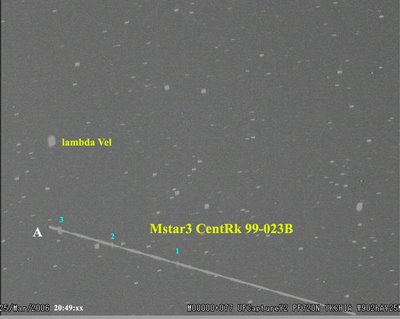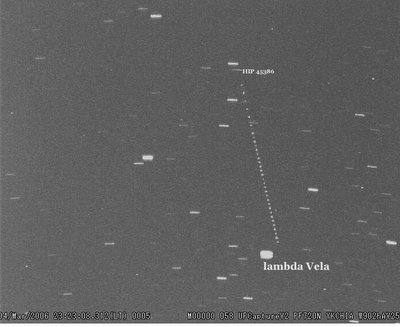
Unid
Date/Time: 3/26/06 Time 21:17:54 local time
My location : 1.4341 N, 103.7957
+8 UT
Singapore
This flasher left trail in marked 1,2,3,4,5. For 2,3,5 a series of 2-3 quick flashes.
See this link for individual flash timing.
Meteors ( shooting stars), Sprites, Satellites that had accidentally wandered into the FOV of my skyward real time detection gazing video patrol system








I have the object matching molniya 3-43 (92-085A) but the period does not match the 4.4 sec reported. Instead I saw 2.3596 ( 58.99/25). CLICK

** Mar 12 *Update "Bj" wrote: I plotted your flash measurements, and found them to be very accurate. The spread is +-0.04 s, of which at least +-0.03 s is due to timing resolution and/or image frequency/exposure time. Using 4.702 s period, it is obvious that the first and last flash is part of a main sequence, of which only flash #4 is missing. The secondary maxima lack the last five flashes. (Graph 92-85A.gif sent to yK ) See chart below Plotting 2.351 s period you can see that the secondary maxima are about .04 s after the mid-period, getting slightly closer by the end. (92-85A2.gif ) The 4.4 s you refer to (old observation?) is very reasonable, assuming it also used the full period, or the secondaries couldn't be seen.
My (attempt of) PPAS report was made with the help of PPASinp.exe v.2, slightly edited: " 92- 85 A 06-03-04 15:24:36.67YK 89.4 0.04 19 4.702 F'FF'sm "
